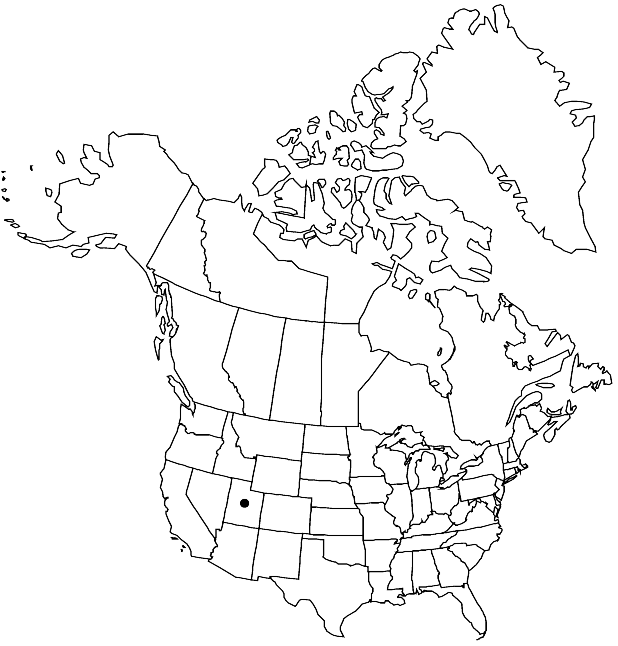Physaria hemiphysaria
Novon 12: 323. 2002.
Perennials; caudex simple or branched (tightly); sparsely to densely pubescent, trichomes (sessile or short-stalked), 4–6-rayed, rays furcate or bifurcate, distinct or slightly fused at base, (sometimes umbonate, tuberculate throughout). Stems few to several from base, decumbent, 0.5–1 (–2) dm, (rather stout, sparsely pubescent). Basal leaves: blade elliptic to suborbicular, 1.5–3.5 (–5.5) cm, margins entire or shallowly dentate (at base, surfaces densely pubescent, silvery). Cauline leaves (petiolate or distal nearly sessile); blade elliptic to obovate, 0.5–1.5 cm, margins entire. Racemes dense, congested, (few-flowered). Fruiting pedicels (spreading or recurved, sometimes loosely sigmoid), 2–6.5 mm. Flowers: sepals lanceolate, oblanceolate, or narrowly elliptic, 3.8–5 mm, (median pair thickened apically, cucullate); petals narrowly lanceolate to linear, 6–10 (–13) mm. Fruits (sessile or substipitate), broadly obcordate, obdeltate, or obcompressed, slightly compressed (angustiseptate), 3–5 (–7) mm; valves (not retaining seeds after dehiscence), sparsely pubescent or glabrous, trichomes appressed; replum as wide as or wider than fruit; ovules 8–16 per ovary; style (1.8–) 3–6 (–7) mm. Seeds slightly flattened, (ellipsoid to suborbicular).
Discussion
Subspecies 2 (2 in the flora).
Selected References
None.
Key
| 1 | Styles 3-5 mm; fruiting pedicels 4-6.5 mm; fruit valves pubescent, often sparsely so. | Physaria hemiphysaria subsp. hemiphysaria |
| 1 | Styles 1.8-2.5(-3) mm; fruiting pedicels 2-4(-5.5) mm; fruit valves glabrous or sparsely pubescent. | Physaria hemiphysaria subsp. lucens |
"not" is not a number. "elongated" is not a number."thick" is not a number."dm" is not declared as a valid unit of measurement for this property."dm" is not declared as a valid unit of measurement for this property.
